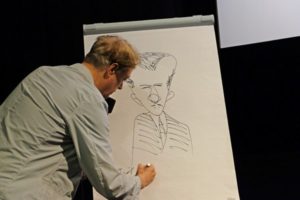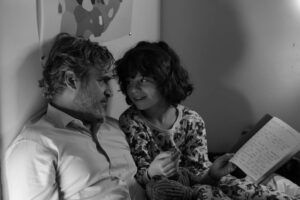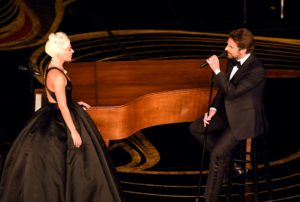Can music, which is so much based on openness, ever die, despite new approaches and improvisation as the internal engine of action? Does anyone really have to save it? The opening quote of this article comes from the film that many have seen as the savior of jazz, La La Land (2016). In it, director Damien Chazelle, himself a former jazz musician, has continued what he started with Whiplash (2014): for the first time in more than three decades, jazz is back in the Hollywood spotlight (at least).
If the 1980s served us with at least two outstanding jazz films, Round Midnight (Bertrand Tavernier, 1986) and Bird (Clint Eastwood, 1988), Chazelle is probably responsible for the new wave of productions after a long drought in this field. In the last few years, we have seen feature biographies of Chet Baker (Robert Budreau’s Born to be Blue, 2015), Miles Davis (Don Cheadle’s Miles Ahead, 2016) and Nina Simone (Cynthia Mort’s Nina, 2016), as well as documentaries about Aretha Franklin (Amazing Grace, Sydney Pollack/Alan Elliott, 2018), Lee Morgan (I Called Him Morgan, Kasper Collin, 2016) and John Coltrane (Chasing Trane, John Scheinfeld, 2016), to name but a few. This series continues with no fewer than four films among this year’s Oscar nominees: the biopics of Gertrude “Ma” Rainey (Ma Rainey’s Black Bottom, George C. Wolfe, 2020) and Billie Holiday (The United States vs. Billie Holiday, Lee Daniels, 2021), the animated feature film Soul (Pete Docter and Kemp Powers, 2020), as well as the short documentary A Concerto is a Conversation (Kris Bowers and Ben Proudfoot, 2020). Half of them also took home a couple of Oscars a few days ago.
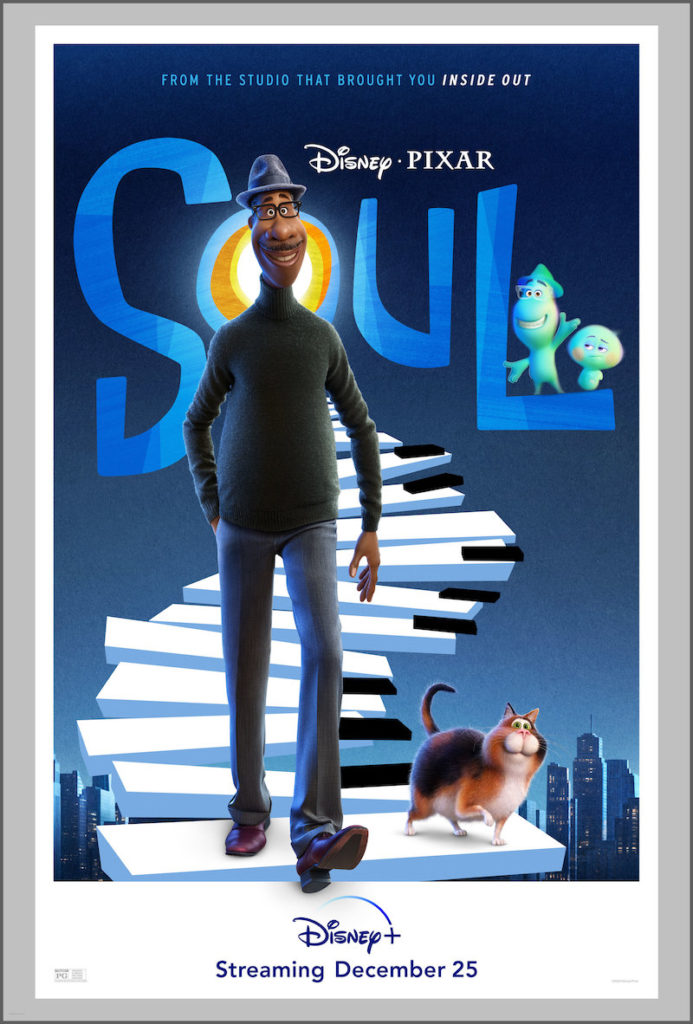
It's conflict and it's compromise, and it's just ... it's new every time. (...) It's very, very exciting! And it's dying. (...) And the world says, "Let it die. It had its time."
It is true that in all of the above films the story is not just about jazz, often it is not even the central or strongest theme, it is just the context. But jazz is also never just about the music, it is at the same time a reflection of the whole of life and of the specific moment in time when the music is played. It is born out of a conflict, it plays it out and tries to find a solution, at best a catharsis, which is a very beautiful metaphor for life itself, but also a synonym for the dramaturgical process.
Pete Docter, one of Pixar’s first and key creators, had already worked on pioneering digital animations (e.g. Toy Story World, John Lasseter, 1995) before making his final breakthrough as the director of a series of psychologically accomplished, if not existentialist, animated films: Up (2009), Inside Out (2015) and Soul (2020). If the theme of the first one was essentially about keeping the child inside oneself alive, and the second one was about the development of temperament while growing up, then the third one continues the series with the search for the meaning of life.
The protagonist of Soul is Joe (voiced by Jamie Foxx), a jazz pianist who dreams of a career in music but must make a living as a music teacher at a high school. In this context, his name could also be linked to the American phrase “average Joe”, an everyman, because, after all, most people are probably quite similar to the main character, given their split between the pursuit of some ideals and the realistic concern for their own existence. Joe gets the chance to audition for local jazz star Dorothea Williams (with the voice of Angela Bassett), at which he shines, and is invited to join the band.
But in between the audition and the evening concert, he suddenly dies due to a silly accident. Or rather he finds himself on his way to the afterlife, from where he escapes to the area where souls are preparing to leave for Earth. In short, it gets complicated. On top of that, Joe unwittingly becomes the mentor of the cynical soul No. 22 (voiced by Tina Fey), who simply does not want to be born and die as a human. He shows his cynicism, for example, in a sequence in which a group of souls are apparently killed:
Don't worry, they're fine. You can't crush a soul here. That's what life on Earth is for.
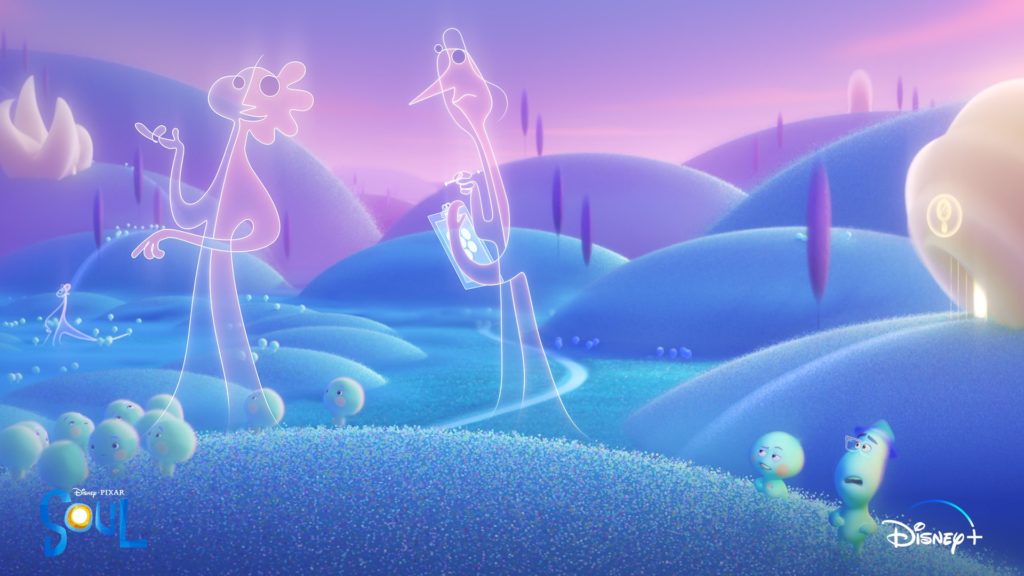
This part of the film, which is also visually quite diverse, combining dynamic 3D protagonists with two-dimensional abstract and uniform antagonists, is also characterized by perhaps the highest concentration of humorous inserts for a wider audience, either in the form of situational comedy or as parodies of famous historical figures, including Abraham Lincoln.
Joe’s mentoring task is to awaken a spark in 22 that would make her happy in her life on Earth. Only with a spark the character is complete (…) and can qualify for the passage to the hereafter. As luck would have it, Joe and 22 do indeed land on Earth, but in bodies you wouldn’t expect, which is sure to amuse particularly younger viewers. The best sequences of this section – and probably of the whole film – are nevertheless again more existentialist and morally inspired, taking place in a hairdressing salon and a jazz club respectively. A nice example is the following thought process of 22:
They say you're born to do something, but how do you figure out what that thing is? And what if you pick up the wrong thing. Or somebody else's thing, you know? Then you're stuck!
These pseudo-philosophical reflections are sympathetic, serve as a mirror of humanity, and may encourage some viewers to think differently. They also may find their way as motivational posters on the walls of a teenager’s or student’s room, but they are not the film’s only strength.
One of its strengths is the music written by Trent Reznor, Atticus Ross and Jon Batiste – an interesting collaboration, considering that Reznor and Ross are representatives of industrial and alternative rock (f.e. Nine Inch Nails) and already somewhat of house composers for David Fincher´s films (they have made all the scores for his feature films of the last decade), while Batiste is one of the new talents in jazz, R’n’B and soul, and is best known as the big band leader of the evening talk show The Late Show with Stephen Colbert (2015-present).
Anyway, the music they have created together for the film Soul ranges mainly between classical compositions for jazz big band, as it oscillates between, let’s say, modal jazz and swing, and abstract, ambient, progressive, and industrial experiments.
It’s hard to reckon how much synergy there really was between one pole and the other, because listening to it we have the impression that Batiste on the one hand and Reznor and Ross on the other are in completely different films. But while Batiste is audibly comfortable in the shelter of the patterns of the jazz tradition, from which he jumps out the most with Disney-fitting gospel, Reznor and Ross often stray into the open field and take on a more ballad, pop or even jazz element, which adds more color to their music and emphasizes even more the constant shifting between genres, states of mind and – according to the film’s narrative – states of life.
Like most good animated films, Soul is suitable for the whole family. As a mix of comedy, drama, and musical film, and thanks to its varied animation style, it is very entertaining and dynamic. Full of warmth, it is an ode to inspiration and creativity, but also a therapeutic session, a reflection on oneself, one’s heart’s desires, one’s relationship with one’s fellow human beings and their expectations, and – quite simply – the search for happiness. Jazz is not an insignificant part of all this because, as Herbie Hancock would say:
Jazz injects heart and soul into our blood, strengthens and ignites fireworks in our brain.
So, at least on the next 30th April, when UNESCO’s World Jazz Day will once again be celebrated on Hancock’s initiative, sit back, listen to some early Mojmir Sepe, Primož Grašič or Žan Tetičkovič and look at life with different eyes.
first published in Slovenian in Koridor, 5/2021

